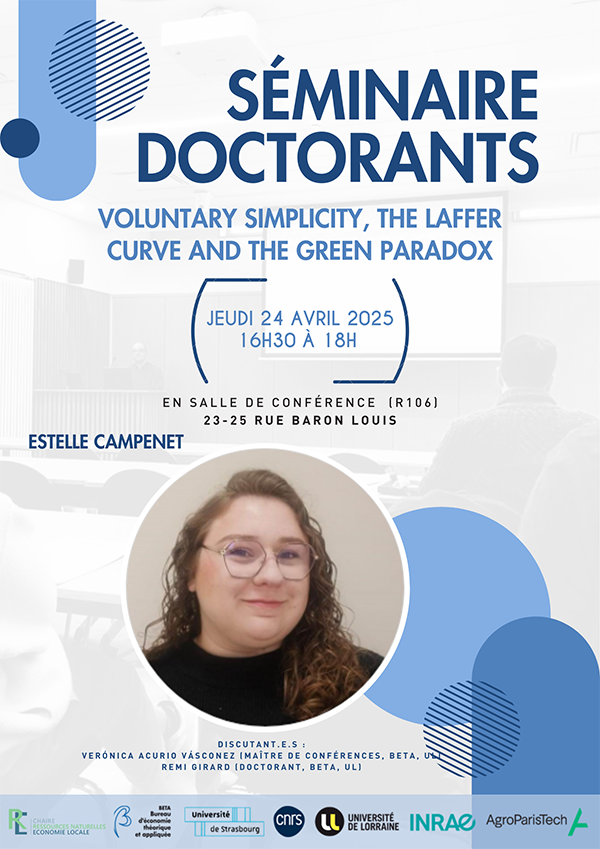Séminaire Doctorants / Chaire RENEL – Estelle CAMPENET

Le 24/04/2025
De 16:30 à 18:00
Détails de l'événement :
Abstract: This paper develops a simple general equilibrium model with social capital accumulation. The representative household chooses how much time to allocate between work and social capital accumulation. Social capital generates satisfaction, but this satisfaction is affected by pollution. This paper considers two cases: (1) pollution reduces the marginal utility of social capital (social withdrawal effect) and (2) pollution increases the marginal utility of social capital (social engagement effect). Pollution, treated as a pure externality, is assumed to originate from production. In line with Pigouvian principles, the government introduces a proportional tax on production to finance depollution expenditures under a balanced budget rule. When preferences exhibit a social engagement effect or a weak social withdrawal effect, the economy has a unique steady state, which may experience a Laffer Curve. When preferences exhibit a strong social withdrawal effect, two steady states can coexist: one characterized by a high level of social capital and low consumption (voluntary simplicity steady state), and the other by a low level of social capital and high consumption (consumerist steady state). As in the case of a unique steady state, a Laffer Curve may emerge at the consumerist steady state but never at the voluntary simplicity steady state. However, the voluntary simplicity steady state always exhibits a Green Paradox, a phenomenon that never occurs at the consumerist steady state. Regarding the dynamics, the unique steady state that arises when preferences exhibit a social engagement effect or a weak social withdrawal effect is saddle-path stable. When preferences are described by a strong withdrawal effect, we prove that the consumerist steady state is also always saddle-path stable while the voluntary simplicity steady state is always locally indeterminate.






